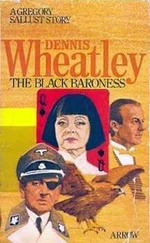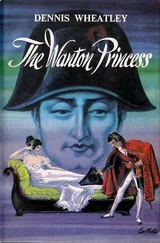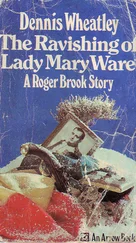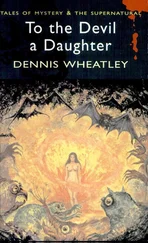Dennis Wheatley - The Satanist
Здесь есть возможность читать онлайн «Dennis Wheatley - The Satanist» весь текст электронной книги совершенно бесплатно (целиком полную версию без сокращений). В некоторых случаях можно слушать аудио, скачать через торрент в формате fb2 и присутствует краткое содержание. Жанр: Старинная литература, на английском языке. Описание произведения, (предисловие) а так же отзывы посетителей доступны на портале библиотеки ЛибКат.
- Название:The Satanist
- Автор:
- Жанр:
- Год:неизвестен
- ISBN:нет данных
- Рейтинг книги:4 / 5. Голосов: 1
-
Избранное:Добавить в избранное
- Отзывы:
-
Ваша оценка:
- 80
- 1
- 2
- 3
- 4
- 5
The Satanist: краткое содержание, описание и аннотация
Предлагаем к чтению аннотацию, описание, краткое содержание или предисловие (зависит от того, что написал сам автор книги «The Satanist»). Если вы не нашли необходимую информацию о книге — напишите в комментариях, мы постараемся отыскать её.
The Satanist — читать онлайн бесплатно полную книгу (весь текст) целиком
Ниже представлен текст книги, разбитый по страницам. Система сохранения места последней прочитанной страницы, позволяет с удобством читать онлайн бесплатно книгу «The Satanist», без необходимости каждый раз заново искать на чём Вы остановились. Поставьте закладку, и сможете в любой момент перейти на страницу, на которой закончили чтение.
Интервал:
Закладка:
He was describing to her certain rain-making and fertility rites, still practised with success by peoples remote from civilization who had had handed down to them a little of the old wisdom, when the taxi at last drew up.
Quickly untying the handkerchief that blindfolded her, Ratnadatta got out. As he paid off the taxi she looked about her and saw that they were in a dark street, lined on both sides by mean houses. There was a little group of men in caps talking together outside a public house on the corner, but otherwise few people in sight.
Taking her arm, Ratnadatta hurried her along in the other direction. They turned a corner into another mean street along one side of which there was a high blank wall. At its end the wall continued at a right angle as one side of a narrow lane. Entering it they walked on for about a hundred yards. Mary saw then that it was a cul-de-sac, with an end that broadened out into a small court in which, with their lights out, half-a-dozen cars were parked.
On the left side of the court the wall merged into a large square brick house. Its tall windows showed not a chink of light, but a single low-power electric bulb made a pool of dim yellow radiance from over the stone pediment of its porch. Five steps, two of them cracked, led up to the porch which was flanked by fluted pillars. Above the broad front door, from which the paint was peeling, Mary noticed a fine Adam fan-light. It reminded her of the many in the older streets of Dublin, and she realized that this mansion, now surrounded by slums, must date back to Georgian days.
Ratnadatta pressed a bell push several times, as if he was using it to send a morse code signal. The door was opened and, stepping in, they came face to face with a heavy curtain that screened the interior as though it was a black-out precaution to prevent light shining into the street at a time when an air-raid threatened.
An end of the curtain was lifted and they sidled through, emerging into a small pillared hall with a wrought-iron balustraded staircase leading up from its centre. After the decayed appearance of the outside of the house, its inside came as a striking contrast. The hall was brightly lit by a sparkling crystal chandelier that hung from the centre of its ceiling, the cornices were gilded, the furniture was the finest Chippendale and two negro footmen in plain liveries bowed silently to Ratnadatta as he and Mary came in, then took their coats.
She wondered where the house was situated and, as the taxi had set off from Chelsea towards the north, she thought it might be in Islington, or one of those districts no great distance from the City in which rich nobles had long ago had their town residences. In any case it seemed probable that some wealthy family had held on to it for several generations, always hoping that the value of its site would increase, whereas it had gone down and down as the district in which it lay had gradually deteriorated into a slum area.
Before she had time to speculate further, Ratnadatta took her up the broad staircase and along a corridor to a curiously shaped room. It was low ceilinged, very long but quite narrow. Half way along it stood a table on which were several decanters and some light refreshments. Along the far wall were a row of half-a-dozen elbow chairs, all of which faced an unbroken line of heavy brocade curtains.
After a glance round, Mary assumed from the position of the chairs that the curtains must screen windows out of which anyone seated opposite them could look when the curtains were drawn back. While she was wondering how, in such a place, there could possibly be a prospect worthy of such elaborate arrangements for looking at, Ratnadatta had gone to the table and filled a wine glass from one of the decanters. Offering it to her with a bow he said:
'This you will like. It ees a rare wine coming from Greece. In old times it was great favourite with priestesses who serve the oracle at Delphi.'
On sipping the near-purple coloured liquid, she thought it tasted like a rich sherry in which aromatic herbs had been steeped. Finding it very pleasant she drank about half the contents of the glass. Ratnadatta meanwhile had helped himself to a lighter golden coloured wine, and remarked:
'For me something drier. Off this wine off Cyprus I am very fond. Come now. Be seated, plees, and soon I shall show you that I haf made no idle boast off the powers bestowed by Our Lord Satan on those who serve him well.'
They sat down side by side in two of the elbow chairs and for some ten minutes the Indian resumed his discourse on ancient rites; then, having glanced at his watch, he leaned forward and pulled a cord that drew back the pair of heavy curtains facing which they were seated. To Mary's surprise this did not reveal a window; only a blank wall covered in patterned satin; but in it, opposite each of the chairs, was what she at first took to be a ventilator, as it was an aperture about six inches square, covered with fine mesh wire netting.
Ratnadatta signed to her to look through it, and when her eyes came close to the wire she found that these secret observation posts gave an excellent view of a large and lofty room. She guessed that at one time it had probably been a banqueting hall, and the curious shaped room in which she was sitting a minstrels' gallery, opening into it. But now the former had more the appearance of a chapel. At its far end, covered with a broad strip of blood-red silk, was a long raised slab that looked as though it might be used as an altar. Beyond it stood a great carved throne of ebony, and behind that, tall red silk curtains having embroidered upon them in gold a design of two drop-shaped sections with curved tails interlocking to form a circle, which, although Mary did not know it, was the Yin and the Yang - the Eastern symbol for the male and female principles. In the body of the hall, to either side of a central aisle, instead of pews were ranged a dozen or more divans plentifully stocked with cushions of many colours, and from somewhere out of sight came the sounds of a band tuning up.
Down in the hall some twenty people were already assembled, and were being joined by others. They were coming in by a door that Mary could not see, as it was below the balcony in which she was sitting, but just within her range of vision there was a large table on which stood an array of bottles and glasses; and each newcomer helped himself to a drink from it before joining the earlier arrivals.
From the groups down below there came up a gentle murmur of conversation and from their behaviour they might have been guests at a perfectly respectable cocktail party. But one glance was enough to see that this gathering was far from being anything of that kind. Everyone present was wearing a small black satin mask, a narrow black velvet garter below the left knee and silver sandals, but little else. They had on only long cloaks of transparent veiling, sparsely decorated with silver suns, moons or signs of the Zodiac; so that the bodies of all of them were almost as fully revealed as if they had been naked. The party consisted of roughly equal numbers of both sexes; among the women there was an enormously fat negress and a young Chinese girl; among the men, two negroes, one of whom had white hair, an Indian and two who looked like Japanese.
The company was a mixture of all ages and although about a third of them had well proportioned figures the bodies of the majority were far from attractive. But there was nothing to suggest the obscene either in the decor of the temple or the attitudes of the people in it, and Mary decided that the single silver-spangled garments they wore, by softening the lines of thick hips, lean shanks, hanging breasts and pot-bellies, made the ugly ones considerably less repulsive to look at than if they had been morally irreproachable eccentrics standing about quite naked in a nudist camp.
Читать дальшеИнтервал:
Закладка:
Похожие книги на «The Satanist»
Представляем Вашему вниманию похожие книги на «The Satanist» списком для выбора. Мы отобрали схожую по названию и смыслу литературу в надежде предоставить читателям больше вариантов отыскать новые, интересные, ещё непрочитанные произведения.
Обсуждение, отзывы о книге «The Satanist» и просто собственные мнения читателей. Оставьте ваши комментарии, напишите, что Вы думаете о произведении, его смысле или главных героях. Укажите что конкретно понравилось, а что нет, и почему Вы так считаете.












